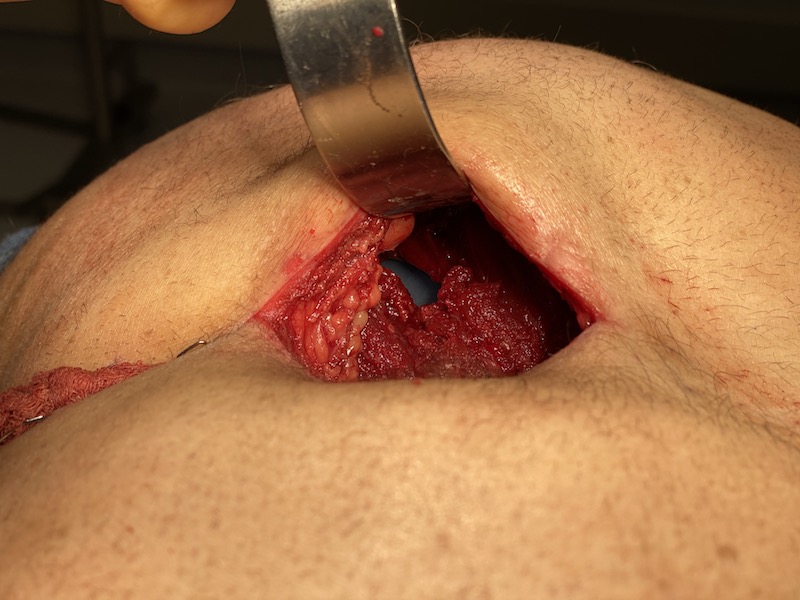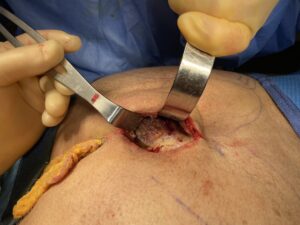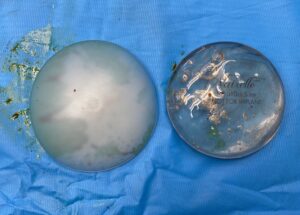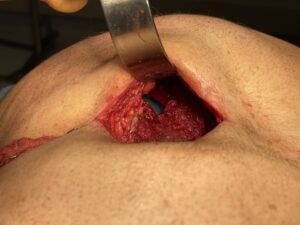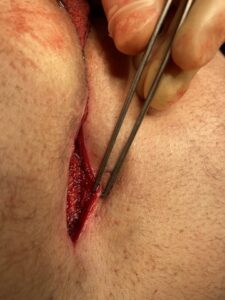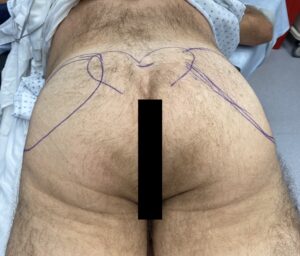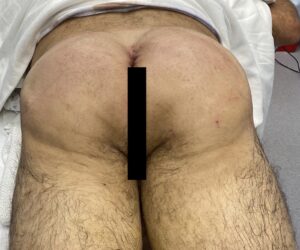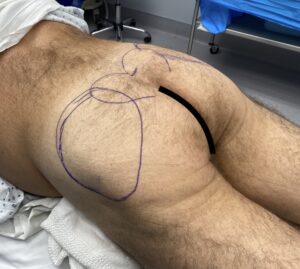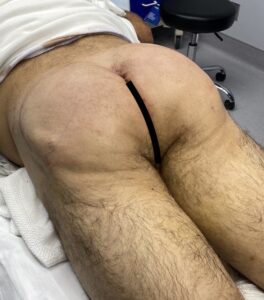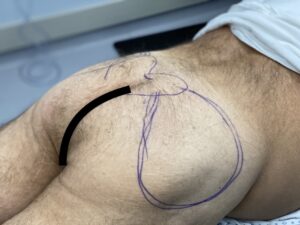Background: While the vast majority of buttock augmentations are done using an autologous fat injection technique, implants still have a valuable role to play in buttock augmentation/reshaping efforts. One would think that fat injections would have relegated implants to a very diminished role but the exact opposite is true. Fat injections have created an ever increasing awareness and demand for buttock enhancement procedure. While fat can work for a large number of patients it is not a viable or effective procedure for everyone.

Men who present for buttock augmentation are often uniquely different than women. They often are leaner with less fat stores for harvest than women. Fat injections may also be less effective for men although this is more of a personal observation than scientifically proven. The aesthetic requirements for male buttock augmentation is usually less is size than many women and having shape is more important than sheer size or volumetric increase.
Most men that present for buttock augmentation are usually younger which is very similar to that of women. While most older men are well known to have a flat or non-existent buttocks, very few of them are willing to undergo surgery to change that common genetic/aging predisposition. And almost certainly the older male who is lean with a flat buttock profile does not have enough donor tissue to do fat injections. And even if they did how well the fat would survive in an older patient is more precarious than in younger patients. This leaves the option of implants in the older male buttock augmentation patient.
Case Study: This 62 year old male had always wanted an increased buttock size. He said he never had any buttocks even when he was young and being older only made it worse. He had thought about buttock implants but had held off from undergoing the procedure because he heard they were ‘dangerous’ and had a high rate of complications. Preoperative discussion focused exclusively on the intramuscular approach where effective augmentations could be achieved with a low risk of complications. Much more preoperative discussion was spent on a good understanding of the recovery that is needed.
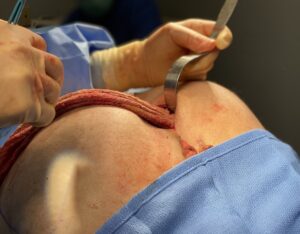
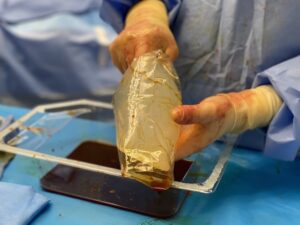
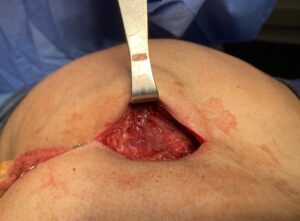
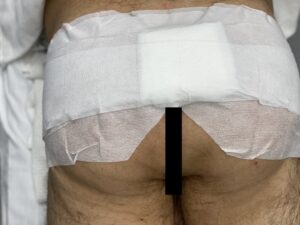
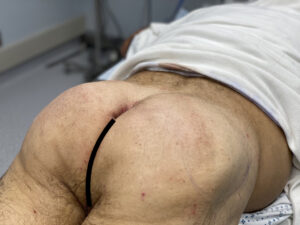
Intramuscular buttock implants can provide volume when adequate fat stores do not exist and the desire for buttock implant size is not overly large. It can be a difficult recovery due to the muscle trauma but in the long run has a low rate of infection, fluid collections, or implant rotation/malpositions. In the older male with non-exitant buttock shape implants provide the only reliable augmentation method in most cases.
Case Highlights:
1) Being older (60 years plus) does not not preclude one from undergoing buttock implant augmentation surgery.
2) The intramuscular pocket offers men up to 400ccs of implant volume in most cases.
3) The intramuscular buttock implant can be developed using breast implant sizers so the buttock implant can be inserted with one time with a non-touch funnel insertion technique.
Dr. Barry Eppley
Indianapolis, Indiana

